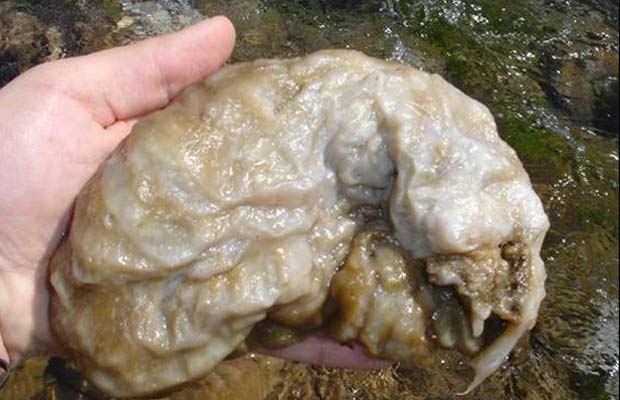Scientist to study why ‘rock snot’ proliferating and possible effects on salmon
Story from Winnipeg Free Press
By: Alison Auld, The Canadian Press
HALIFAX, Nova Scotia
[dropcap]I[/dropcap]t is a goopy, gritty mess that looks more like dirty brown dreadlocks or filthy shag carpet than a marine growth.
Suitably dubbed “rock snot” by scientists who study it, the algae is slowly taking over riverbeds around the world and raising concerns that it could be a new stressor to aquatic life.
Josh Kurek, a biologist at Mount Allison University, has studied Didymosphenia geminata or Didymo for years but is now trying to determine why the unusual algae is accelerating its spread through parts of eastern Canada.
His team will also try to figure out if the thick, gelatinous mats that can blanket a riverway’s rocky bottom are taking a toll on already fragile juvenile Atlantic salmon stocks.
“Something in the environment has changed over the past few years and conditions are more favourable to forming these blooms,” he said.
“We can really focus on what is the specific mechanism that is promoting blooms in these ecosystems.”
The National Sciences and Engineering Research Council of Canada has awarded Kurek $24,000 a year for the next five years to study pristine salmon rivers on Vancouver Island, river systems in the Gaspe region of Quebec, and the tributaries of the Restigouche River in northern New Brunswick.
He plans to collect lake sediment cores from areas where Didymo blooms may have occurred in a bid to reconstruct the ecological conditions present at the time. That may allow scientists to understand the environmental changes in watersheds over the last millennium and help to explain why Didymo is now advancing on certain river systems.
Biologists suspect it may be linked to elevated nitrogen in the environment from fertilizers, the burning of fossil fuels or climate changes that affect the way a river flows.
The project follows on Kurek’s research more than a year ago that found Didymo was not an invasive species that was transferred to rivers by anglers on their boats and gear as previously believed.
Rather, he found the offending organisms have been around for thousands of years but were only becoming prolific more recently possibly as a result of ecological changes.
Kurek says the algae was detected in western Canadian sites in the late 1990s and in 2006 in Quebec. In both areas, it was found in pristine rivers with low levels of nutrients and very high water quality.
What’s worrisome to scientists is that the pervasive species has ended up in the same rivers as juvenile wild Atlantic salmon, raising the question of whether it is affecting the depleted stock that feeds on invertebrates found in the mats of algae.
“We think Didymo represents a new potential stressor for some of these salmon populations,” he said.
“There may be either a negative impact or there could be a positive impact, in that it’s providing more food for the fish.”
Kurek says the findings may help fisheries and environmental managers control the spread of the algae, and protect valuable wild salmon populations that are threatened by overfishing and warming waters.
Didymo has been found in New Zealand, South America and the United States, but Kurek says there are no reports of it in Nova Scotia, Newfoundland or P.E.I.
“It’s proliferating because of changes in the water system,” he said, adding that “it’s a sentinel species” that may warn of other environmental problems.
Join the Atlantic Salmon Federation . . .




